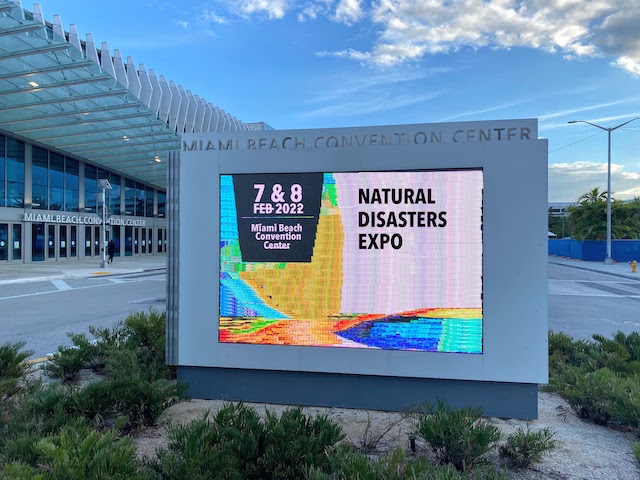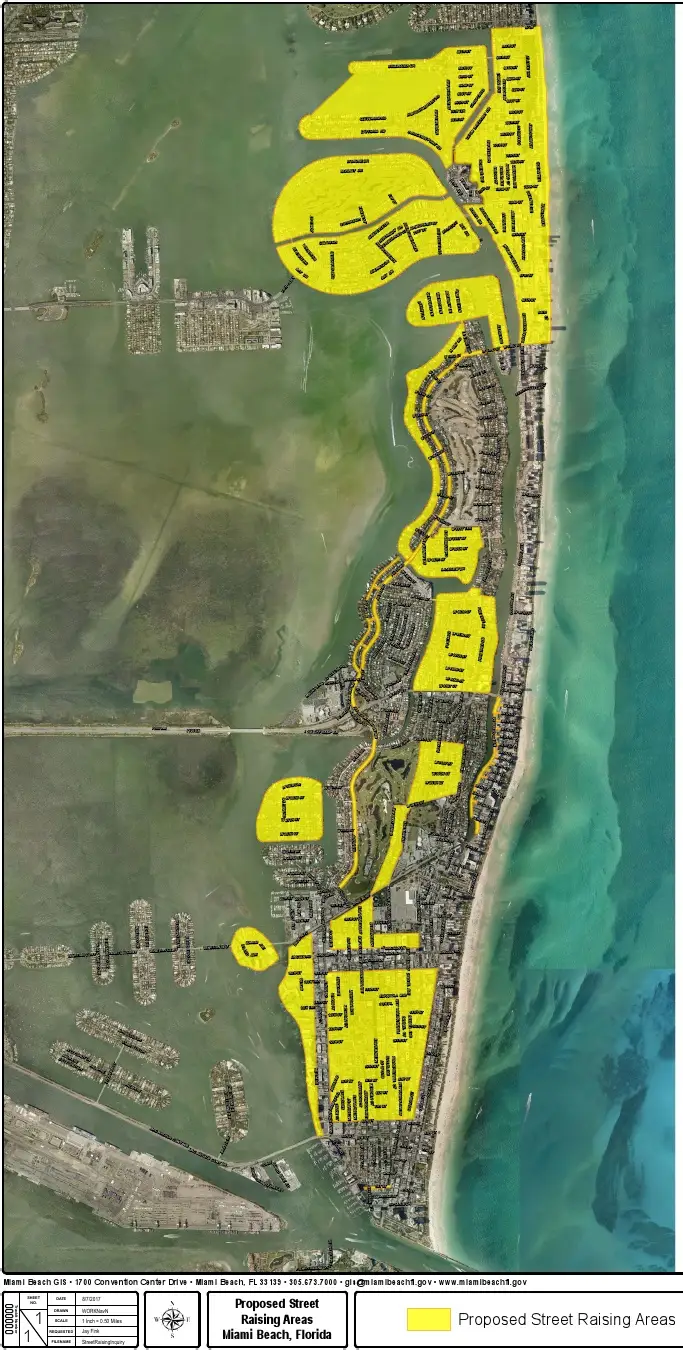|
Today's Opinions, Tomorrow's Reality
Exhibition of Disaster By David G. Young Miami Beach, Florida, February 22, 2022 -- The City of Miami Beach is doomed by the rising seas. Wealthy residents are spending hundreds of millions to put off the inevitable. Whoever decided to host the Natural Disasters Expo in Miami Beach has a dark sense of humor. The island is in the most hurricane prone region in the world and averages just four feet above sea level. The 1926 hurricane brought a 15 foot storm surge and nearly leveled the island. The city's famed Art Deco district exists due to rebuilding after this disaster.
Sheer luck has saved Miami Beach from another direct hit for 96 years. Yet even on sunny days, Miami Beach suffers flooding due to sinking land and sea level rise. A recent report by the NOAA predicts that the mean sea level here will go up by one foot over the next 30 years.1 This is a frightening number for an island averaging just a few feet above the sea. Miami Beach isn't going down without a fight. Walk 20 feet to the right of the Convention Center’s welcome sign and you stand atop an underground pumping station. Powerful electric pumps connected to a diesel backup generator to eject storm water in the Colins Canal.
The new pumping station is one of dozens planned for Miami Beach. The original gravity-driven storm sewers fail with increasing frequency as land subsidence and sea level rise make gravity obsolete. The eastern half of Miami Beach is a slowly sinking former mangrove swamp. Parts are now barely a foot above sea level and streets like West Avenue regularly flood during rain and extreme tides. During these events, old storm sewers completely fill, sending trapped air and water shooting out of drains designed to send it the other direction. If you see a manhole start to shake during a Miami area rainstorm, the best advice is to run. The city has a $400 million plan to build dozens of pumping stations under the pavement and raise the streets an additional two feet.2 In 2014, the first pump went in where 14th Street hits the bay, then its surface was elevated along with Alton Road. Soon thereafter, all streets in the Sunset Harbor neighborhood were elevated. Today a massive construction project is raising food-prone Indian River Drive in Mid-Beach.3 Many residents aren't thrilled. Raising streets typically causes the front doors of adjoining buildings to be below street level, sending storm water flowing inside In October of 2016, this is exactly what happened to an Italian restaurant in Sunset Harbor, kicking off a legal fight with its insurer over whether the steps down to Sardinia's patio and dining room made it a "basement" ineligible for flood insurance.4 The restaurant ultimately prevailed, and the city now “harmonizes” the slope of elevated streets with adjacent properties and adds storm drains at the base. Yet high-profile failures of pumps have damaged public trust. Neighborhood opposition has long stalled plans to elevate West Avenue and build a pumping station on Lincoln Road. Debate continues on wither to place the enormous pump control panel and backup generator in the middle of the road or spend millions more to hide this equipment in a parking lot. Even if all the roads are raised and the pumps are built, ultimately these measures aren't enough. If NOAA is right about sea level rise, it will negate half of the benefit of the street raising by the early 2050s. And assuming the sea continues to rise, the benefits are gone by the early 2080s. Water won’t stop there. Even if the world cuts greenhouse emissions to zero by then (unlikely), existing carbon levels will have locked in temperature and sea level increases for many decades to come. This doomsday scenario is also the best-case scenario. It assumes no catastrophic events like the collapse of ice sheets in Greenland or West Antarctica. And it completely ignores the risk of that long-overdue major hurricane. Unfortunately, there is no real solution. The Army Corps of Engineers has proposed protecting downtown Miami with a 20-foot high seawall.5 Desperation might inspire something similar for Miami Beach. But what's the point? This would destroy the beach and bay access that give the city its sole reason to exist. And a seawall might not even work -- South Florida's land is porous limestone providing millions of tiny passages for water to go under any barrier. So, yes, Miami Beach is doomed. But the road raising project might buy it a few decades. Skyrocketing property values and rents show that the area remains immensely popular. Rich residents are more than willing to spend their fortunes buying a little more time in paradise. So enjoy Miami Beach while you can. But don't bother going to the next disaster expo. Just stick around long enough and you will undoubtedly see one firsthand. Related Web Columns: Eroded Foundations, June 29, 2021 Paradise Lost, November 2, 2020 Notes: 1. Miami Herald, New U.S. Sea Rise Projections are Lower but Still Forecast Grim Future for Florida, February 16, 2022 2. National Public Radio, As Waters Rise, Miami Beach Builds Higher Streets And Political Willpower, May 10, 2016 3. City of Miami Beach, Indian Creek Drive Flooding Mitigation Phase III, Project Status Update, February 26, 2021 4. Miami Herald, Miami Beach Sued for Raising Roads for Sea-Level Rise, October 28, 2021 5. New York Times, A 20-Foot Sea Wall? Miami Faces the Hard Choices of Climate Change, June 2, 2021 |



